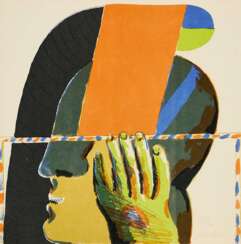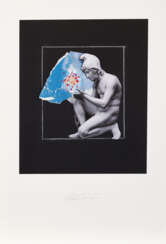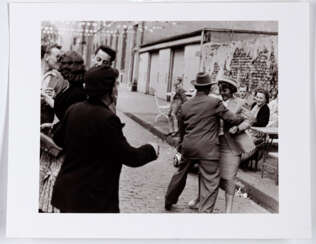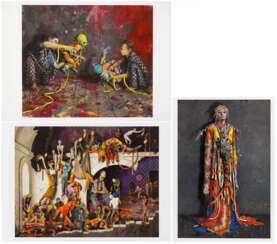offset

Erwin Heerich was a German artist.
Heerich emphasized that for him, "cardboard, like polystyrene, had no specifically aesthetic or historical connotations, the materials are value-neutral to the largest possible extent." Furthermore, the artist was not primarily "concerned with the manifestation of an art object, but with making an idea material in terms of a specific problem: how space can be presented and formed."


Ernst Wilhelm Nay was a German painter and graphic designer of classical modernism. He is considered one of the most important painters of German post-war art.


Franz Erhard Walther is a German artist (sculptor, conceptual, installation and process artist).


Robert Milton Ernest Rauschenberg was an American artist renowned for his pioneering work that blurred the boundaries between painting and sculpture, thereby anticipating the Pop art movement. From his early days at the Art Students League of New York to his experiments at Black Mountain College, Rauschenberg's career was marked by innovation and collaboration. His "Neo-Dadaist" approach, shared with contemporaries like Jasper Johns, questioned traditional distinctions between art objects and everyday items, drawing inspiration from Marcel Duchamp's Dadaist principles.
Rauschenberg's most notable works, such as "Erased de Kooning Drawing" and his "Combines," utilized found materials and images to create new art forms that challenged viewers' perceptions. His use of non-traditional materials like twine, soil, and even taxidermied animals, alongside traditional canvas and paint, set new precedents for what could be considered art. His groundbreaking silkscreen paintings incorporated found images, further cementing his role in the evolution toward Pop art.
The artist's work is represented in major museums and galleries worldwide, reflecting his significant impact on contemporary art. His pieces like "Canyon" and "Monogram" are celebrated for their innovative integration of sculpture and painting, while "Signs" captures the tumultuous spirit of the 1960s through its collage of cultural figures and events, housed in institutions like the Museum of Contemporary Art, San Diego, and The Minneapolis Institute of Arts.
For collectors and experts in art and antiques, Rauschenberg's oeuvre represents a critical junction in the history of modern art, where the lines between different media and disciplines were explored and often erased. His legacy is not just in the objects he created but in his bold reimagining of the art-making process itself, encouraging a dialogue between art and life that continues to inspire artists today.
For updates on new product sales and auction events related to Robert Milton Ernest Rauschenberg, consider signing up for our newsletter. This subscription service is tailored specifically for enthusiasts eager to stay informed about the latest opportunities to acquire works by or related to this transformative artist.


Bernhard Johannes Blume is a German art photographer.
Bernhard Blume and his wife Anna Blume created many staged black and white photographs in which they themselves took part. They are considered among the pioneers of staged photography.


Markus Lüpertz is a German painter, sculptor, graphic artist, and writer. He also publishes a magazine, and plays jazz piano. He is one of the best-known German contemporary artists. His subjects are characterized by suggestive power and archaic monumentality. Lüpertz insists on capturing the object of representation with an archetypal statement of his existence. His art work is associated to neo-expressionism. Known for his eccentricity, German press has stylized him as a «painter prince».


Horst Antes was a German painter, graphic artist and sculptor, a pioneer of the new figurative painting in Germany.
After studying at the Karlsruhe Academy of Fine Arts from 1957 to 1959, Antes taught there himself and later became a professor there.
Antes became known for the Kopffüßler (head-foot) image, which has been a recurring theme in his paintings, sculptures and graphic works since the early 1960s. Antes' work is represented in several major collections in Berlin, Hamburg, Cologne and elsewhere in Germany.

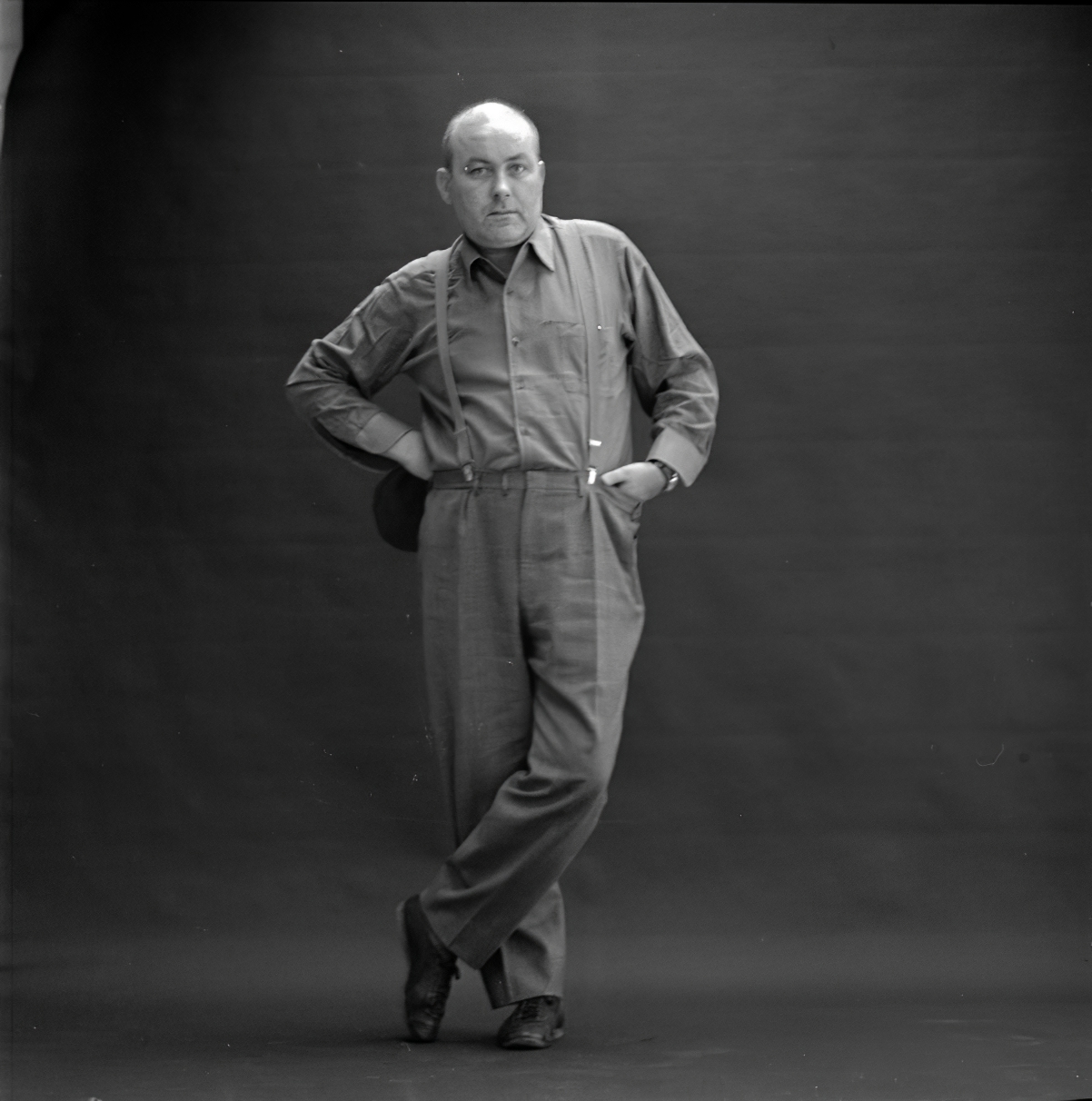
Karl-Dietrich Roth was a Swiss artist best known for his artist's books, editioned prints, sculptures, and works made of found materials, including rotting food stuffs.

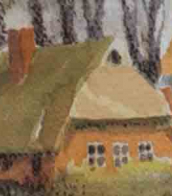


Horst Antes was a German painter, graphic artist and sculptor, a pioneer of the new figurative painting in Germany.
After studying at the Karlsruhe Academy of Fine Arts from 1957 to 1959, Antes taught there himself and later became a professor there.
Antes became known for the Kopffüßler (head-foot) image, which has been a recurring theme in his paintings, sculptures and graphic works since the early 1960s. Antes' work is represented in several major collections in Berlin, Hamburg, Cologne and elsewhere in Germany.







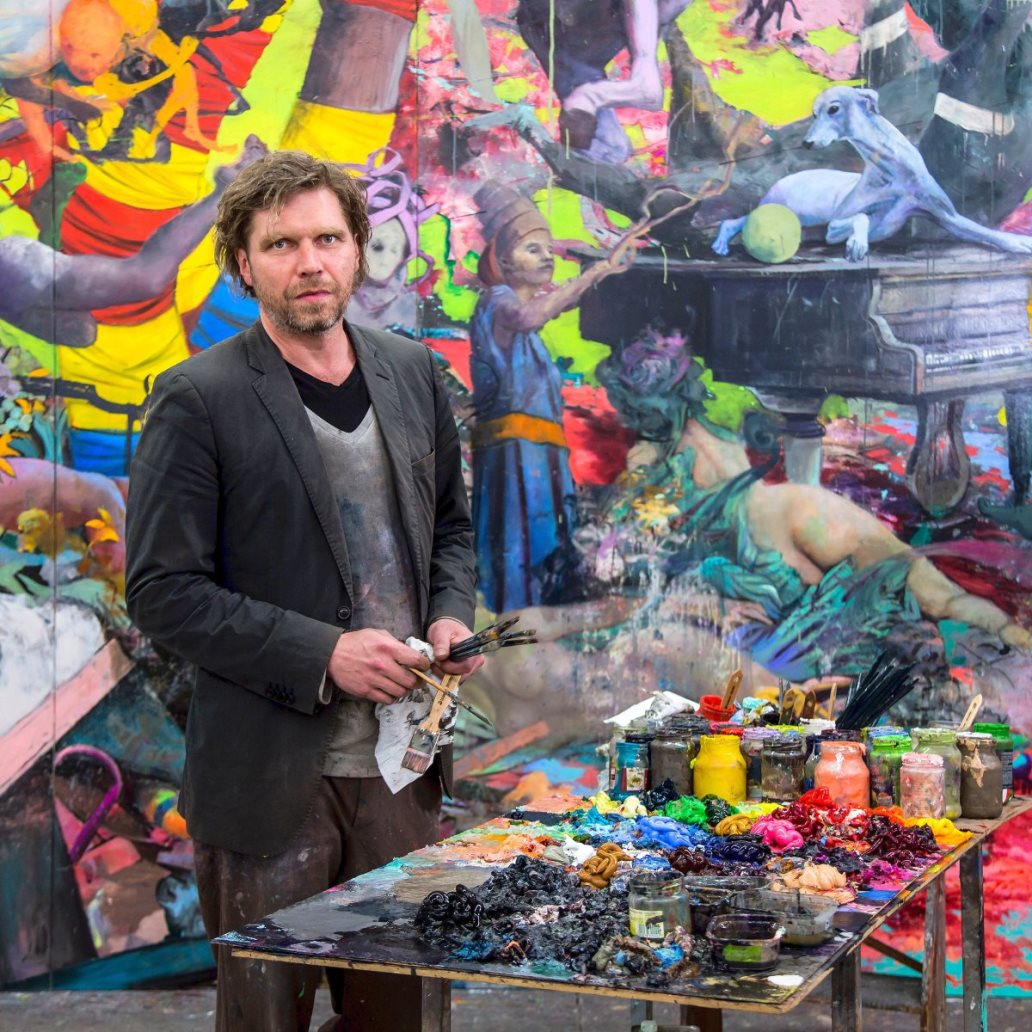
Jonas Burgert is a German figurative artist living and working in Berlin.
Jonas Burgert graduated from the Academy of Fine Arts in Berlin and studied as a graduate student (Meisterschueler) under Prof. Dieter Hacker in Berlin, and his work has been characterized from the very beginning by its vivid originality.
Burgert's paintings are filled with fantastic figures of the most unimaginable proportions. In the spaces of his panoramic paintings, one is immersed in a visual chaos of narrative layers, amidst mysterious events, strange figures and creatures. Jonas Burgert's large-format paintings are dominated by the grotesque, the bizarre and the surreal. Nightmarish zombie-like figures invade his pictorial worlds, frightening and appealing at the same time.
Since 1998 his work has been featured in numerous group exhibitions around the world, Jonas Burgert is now very successful and his works are very willingly acquired by many galleries.













